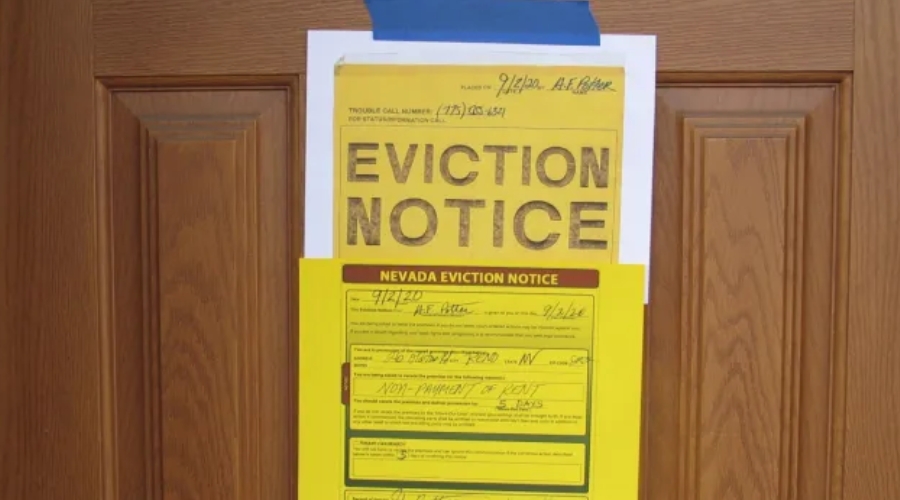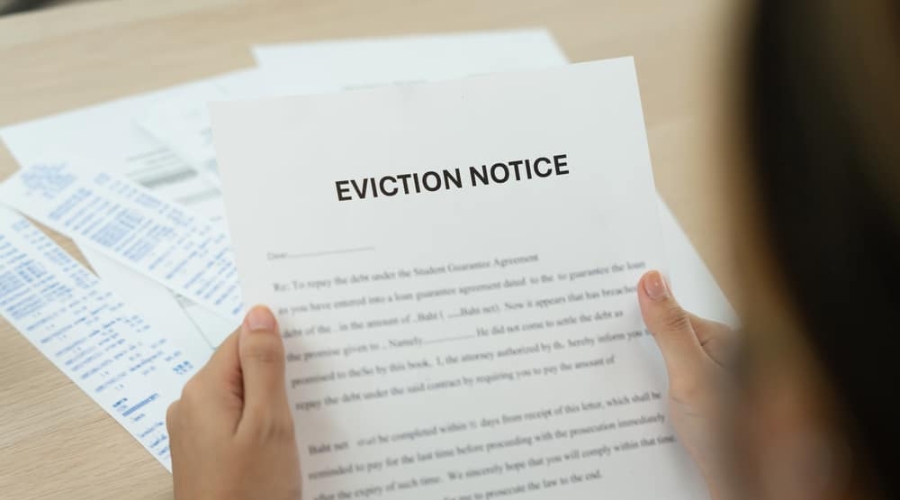Evicting a tenant in Vermont isn’t as simple as handing over a notice—it’s a legal maze where one misstep can cost you time, money, or even your case. The eviction process in Vermont comes with strict timelines, documentation requirements, and court procedures that every landlord must understand.
In the LeaseRunner’s guide, we break down the most common mistakes landlords make and how to avoid them, to help you navigate eviction law smoothly and confidently.
New Updates from The Senate's 2025 Housing Bill in Vermont (S.127 / Act 69)
In the realm of the eviction process in Vermont, Vermont’s Senate Bill S.127 (also known as Act 69) introduces significant changes that alter how landlords and tenants navigate eviction-related laws. This housing package contains amendments that reshape several aspects of rental regulation and tenant protections.
Expanded Protected Classes
Under S.127/Act 69, the state broadens its fair housing protections to include citizenship, immigration status, and additional demographic categories.
This expansion prevents landlords from initiating eviction actions based on these newly covered characteristics. Landlords must now avoid discriminatory termination notices or evictions targeting individuals due to their status.
This amendment strengthens anti-discrimination measures in the Vermont eviction process, ensuring that tenants within these categories cannot be excluded or removed from housing on prohibited grounds
Prohibition of Rental Application Fees
One of the most impactful reforms in Act 69 is the prohibition of rental application fees. Landlords and rental agents are now explicitly barred from charging applicants any fee to apply for tenancy. They must also accept a variety of valid identification documents for background checks without shifting administrative costs to prospective tenants.
This change removes a common barrier in the housing search, aligning with Vermont’s longstanding interpretation that any application fee—under any name—is illegal, including credit or background check charges.
By banning these fees, Act 69 simplifies the initial stage of tenancy applications and reduces the financial burden on renters. This reform directly influences the eviction process in Vermont by ensuring that access to rental housing is fairer and more transparent from the outset.

Legal Grounds for Eviction in Vermont
In Vermont, landlords must follow specific legal procedures and provide valid reasons before removing a tenant from a rental unit. The eviction process in Vermont is governed by state law and varies depending on the grounds for termination. Below are the legally recognized causes a landlord can rely on when pursuing eviction.
Nonpayment of Rent
One of the most frequent triggers for eviction involves unpaid rent. According to Vermont law, rent is officially late just one day after its due date, unless a grace period is outlined in the rental agreement.
Before proceeding with an eviction, the landlord is required to serve the tenant with a 14-Day Notice to Pay. This notice gives renters a two-week window to pay the full balance owed.
If the full rent is settled within those 14 days, the eviction action cannot move forward, and the tenant can remain in the unit. However, if the tenant fails to pay within this timeframe, the landlord may proceed to the next legal step in the eviction process.
Sale of the Rental Property
Another acceptable reason for eviction is when the property is being sold and the new owner does not intend to continue renting it out. In such cases, landlords must issue a 30-Day Notice to Quit, clearly stating the intent to sell. If tenants do not leave the premises after the 30 days, landlords can legally initiate an eviction lawsuit.
This provision ensures that property owners can regain possession without violating tenant protections, while also upholding the structure of the eviction process in Vermont and related legal procedures.
Lease Violations
Tenants are expected to comply with all terms laid out in their written rental agreement. When a tenant breaks the lease—such as by causing property damage, keeping unauthorized pets, smoking in restricted areas, or exceeding occupancy limits—they may be subject to eviction based on a Lease Violation.
Landlords must issue a 30-Day Notice to Quit for these violations. Notably, Vermont law does not obligate landlords to give tenants the opportunity to fix the issue. Once the notice period expires, and the tenant has not vacated, the eviction may proceed through the court system following the eviction process.
Criminal or Illegal Activity
Engaging in illegal acts on the premises provides a firm basis for eviction. These include drug-related offenses, violent conduct, or any behavior that endangers the health and safety of others on the property. A 14-Day Notice to Quit is required in these situations.
Once the notice expires, and the tenant has not vacated voluntarily, the landlord has the right to file for legal removal under the eviction process. It’s important to note that these cases often escalate quickly due to the severity of the conduct involved.

Serving an Eviction Notice in Vermont
Before a landlord can proceed with a formal eviction, Vermont law requires serving a proper notice to the tenant. The sections below break down the different types of notices, what they must include, and how they should be delivered.
Types of Notices
Before initiating the eviction process in Vermont, landlords are legally required to serve the appropriate type of notice based on the reason for eviction. Each notice gives the tenant a specific amount of time to act before legal action is pursued.
- 14-Day Notice to Quit (Nonpayment of Rent): Used when a tenant fails to make rent payment on time. This notice gives them 14 days to pay the overdue amount or vacate the property.
- 30-Day Notice to Terminate (Lease Violation): Applied when a tenant violates lease terms. The notice must detail the breach and provide 30 days for the tenant to resolve the issue or move out.
- 60-Day Notice to Terminate (No Cause, Month-to-Month Tenancy): Required when the landlord seeks to end a month-to-month rental agreement without cause. Tenants must be given at least 60 days’ notice before the tenancy ends.
Required Information in the Notice
To proceed legally with the eviction process in Vermont, every eviction notice must include the following details:
- Tenant’s full name
- Complete address of the rental property
- Clear reason for the eviction (e.g., nonpayment of rent, lease violation, or no-cause termination)
- Date when the tenancy is set to end
- Amount of rent owed (if the notice is for nonpayment)
- Description of the lease breach (if applicable)
- Instructions on how the tenant can cure the issue, if allowed under the circumstances
Each of these points is essential for ensuring the notice is legally valid. Missing or incorrect information may result in delays or dismissal of this process.
Delivery Methods
Serving the notice correctly is a vital part of the eviction process. State regulations allow notices to be delivered through several methods to ensure the tenant receives them and has an opportunity to respond.
- Personal Delivery – The landlord or a representative hands the notice directly to the tenant.
- Substitute Service – If the tenant is unavailable, the notice may be given to another responsible adult at the rental unit.
- Posting and Mailing – When direct service is not possible, landlords can post the notice on the main entrance of the unit and follow up with a mailed copy to the tenant's address.
Each method ensures compliance with state law, and improper delivery may result in legal setbacks. Therefore, correctly serving the notice is a foundational step in lawfully moving forward with the eviction process in Vermont and protecting landlord rights throughout the legal procedure.
Step-by-Step Eviction Process in Vermont
Understanding the eviction process in Vermont is essential for any landlord seeking to legally reclaim their rental property. Below is a detailed, legally accurate breakdown of each phase, from the initial notice to the final removal by the sheriff.
Step 1 – Deliver a Legally Compliant Eviction Notice
The first step in the eviction process requires the landlord to provide the tenant with a written notice that is appropriate and clear. The type and length of this notice to vacate depend on the reason for eviction—such as nonpayment of rent, lease violations, or no-cause terminations.
For instance, a 14-day notice is typically required for unpaid rent, while a 30-day or 60-day notice may be needed for lease terminations without cause. This step ensures that landlords follow Vermont rent laws regarding proper notification.
In cases where no formal lease exists, and occupancy is unauthorized (e.g., a holdover tenant or someone claiming squatter rights), landlords must still follow proper notice and court procedures—self-help eviction is never allowed.
Step 2 – File a Rule to Show Cause
If the tenant fails to move out within the timeframe given in the notice, the next step is to file a Rule to Show Cause with the court. This action begins the formal court procedure, requesting that the court schedule a hearing and issue a summons.
The landlord must include all required documentation, such as a copy of the lease agreement, the notice served, and proof of delivery. Accuracy in this step is crucial to avoid dismissal.
Step 3 – Serve the Summons and Rule to Show Cause
Once the court issues the Rule to Show Cause, the landlord must formally serve the tenant with both the rule and the court summons. This must be done by a sheriff, constable, or a qualified individual per Vermont law.
Service must occur a minimum number of days before the court date, allowing the tenant a fair chance to respond. Proper service is a critical element in the legal eviction steps that follow.
Step 4 – Attend the Court Hearing or Obtain a Default Judgment
At the hearing, both parties present their case. If the tenant fails to appear, the court may issue a default judgment in favor of the landlord. If the judge rules against the tenant, they will issue a judgment of possession, granting the landlord the legal right to proceed with eviction.
Tenants are still protected by certain tenant rights in Vermont, including the opportunity to appeal or respond to claims.
Step 5 – Request a Writ of Ejectment
Following a favorable judgment, the landlord can request a Writ of Ejectment from the court. This official order authorizes the sheriff to remove the tenant if they do not vacate voluntarily. The court will not issue this writ immediately, giving the tenant a short grace period to leave the premises.
Step 6 – Sheriff Carries Out the Eviction
The final step in the eviction process in Vermont involves the sheriff enforcing the Writ of Ejectment. The sheriff visits the property and supervises the removal of the tenant and their belongings, if necessary. This stage marks the legal restoration of the rental unit to the landlord and must be handled according to all procedural safeguards outlined in Vermont rental laws.

Eviction Timeline and Costs in Vermont
Before initiating the eviction process in Vermont, landlords should be fully aware of the time and expenses involved at each stage. From serving notice to regaining possession of the unit, each step in the tenant eviction timeline carries its own legal and financial implications.
Documents Landlords Should Gather for Court
When navigating the eviction process in Vermont, having a well-organized collection of documents can significantly strengthen your position in court. Vermont law places the burden of proof on the landlord, which means the more thorough your documentation is, the better your chances of securing a favorable ruling.
1. Lease Agreement (Signed by Both Parties)
The lease agreement is your primary legal contract and the foundation of your case. It outlines the terms of the tenancy, including rent amount, due dates, late fees, property rules, and conditions that may result in termination.
Vermont courts rely heavily on the lease to determine whether the eviction is enforceable under state law. If the lease has been renewed, amended, or extended, ensure that you include all updated versions and relevant addenda.
2. Eviction Notice Compliant with Vermont Law
Before a landlord can file for eviction, they must issue a written notice in compliance with Vermont’s eviction laws. The type of notice will depend on the reason for eviction:
- A 14-day notice is used for nonpayment of rent.
- A 30-day notice is required for no-cause termination (if allowed).
- A written cure-or-quit notice may be required for lease violations.
Make sure the notice includes the correct number of days, is dated properly, and is delivered through a method recognized by Vermont law (such as hand delivery or certified mail). Keep a copy of the notice for your records.
3. Summons and Complaint from the Court
Once the notice period has expired, landlords in Vermont must file a formal complaint with the court. The court will issue a Summons and Complaint that initiates the case.
In Vermont, this is sometimes referred to as an unlawful detainer action—a legal proceeding to recover possession of the rental property. You’ll need to retain copies of these court-issued documents to demonstrate that you followed the proper filing process and gave the tenant legal notice of the proceedings.
4. Proof of Service
The court must see that the tenant was properly served with the Summons and Complaint. This typically involves personal service by a sheriff or constable, or via certified mail if permitted. Obtain and bring a return of service or proof of delivery to court. If this step is missing or done incorrectly, the court may dismiss your case—even if the tenant violated the lease.
5. Rent Ledger and Payment Records
If the eviction is due to unpaid rent, a rent ledger is critical. This should include:
- All payments received, including the method (check, ACH, credit card, etc.)
- The dates rent was due and when (or if) it was paid
- Any late fees that accrued under the lease terms
- Returned checks or declined payments
- Communication logs about rent reminders
Vermont courts require landlords to prove not just that rent is unpaid, but also the full history of the rental payments and the lease terms associated with them. If a tenant claims they paid in cash, detailed records and receipts will help counter that.
6. Supporting Evidence for Lease Violations or Damages
If the eviction process in Vermont involves more than just nonpayment—such as property damage, nuisance behavior, or unauthorized occupants—you’ll need solid documentation to prove it. This can include:
- Photos or video evidence of property conditions or lease violations
- Written complaints from neighbors or other tenants
- Maintenance reports indicating tenant-caused damage
- Inspection logs showing repeated issues or failure to comply with the lease
- Relevant sections from the lease that clearly state the violated terms
It’s also important to distinguish legitimate damage from normal wear and tear. Vermont law protects tenants from being penalized for gradual deterioration that naturally occurs over time—like faded paint, minor carpet wear, or loose door handles.
Only damage beyond that threshold (such as holes in walls, broken fixtures, or unauthorized alterations) can be considered a valid lease violation and used as grounds for eviction.

5 Mistakes to Avoid When Evicting a Tenant in Vermont
Serving the Wrong Notice Type or Timing
Landlords often misuse the wrong withdrawal notice - Vermont law requires a specific notice depending on the violation: a 14‑Day Notice to Pay for unpaid rent, or a 30‑Day Notice to Quit for lease breaches or sale of property.
Sending an incorrect notice or delivering it too late can derail the eviction process. LeaseRunner’s lease agreement templates can ensure you select the proper document and respect timing requirements.
Attempting “Self‑Help” Eviction Without Court Order
One grave error is landlords changing locks, shutting off utilities, or physically removing tenants without judicial approval. Vermont explicitly prohibits such actions as illegal self‑help evictions—only a court-issued Writ of Possession authorises removal.
If you're unsure whether your actions align with eviction laws, it's crucial to consult reliable resources or legal support tools like LeaseRunner.
Failing to Keep Detailed Documentation
Incomplete or missing documentation can significantly weaken your eviction case. Landlords must keep a detailed paper trail of lease violations, complaints, inspection reports, or unpaid rent notices. These records not only support your claims in court but also protect your right to claim damages later.
For example, if the tenant caused excessive damage to the unit, you may need that documentation to justify withholding part or all of their security deposit. In Vermont, judges often favor tenants when landlords can’t provide written evidence of breaches, making accurate records crucial.
Using tools like LeaseRunner can help automate documentation and ensure every interaction or notice is properly tracked.
Overlooking Tenant Defences Like Retaliatory or Constructive Eviction
Tenants may counter with valid defences, such as claiming retaliatory eviction (e.g., landlord punishing them for reporting habitability issues) or constructive eviction (living conditions forced them to leave). Ignoring these potentials can backfire if the case reaches court.
In some cases, tenants may also qualify for Legal Aid, making it even more important that landlords follow correct procedures from the start. LeaseRunner content outlines how to recognise and avoid triggering such defences.
Missing Court Filing or Service Deadlines
After serving proper notice, landlords must file the eviction complaint within 60 days following expiration of the notice, then serve the Summons and Complaint within that timeframe using an approved method (personal, substituted, mailed, or posted service).
Skipping or delaying this can invalidate the case. LeaseRunner offers step‑by‑step filing checklists aligned with Vermont’s eviction process in the Vermont timeline.
Conclusion
Navigating the eviction process in Vermont requires more than just serving notice—it demands legal precision and attention to detail. Conducting an eviction check before initiating proceedings can help landlords identify potential red flags and avoid delays. Whether you're managing one unit or multiple properties, staying informed and proactive is key. For streamlined support with notices, documentation, and tracking, LeaseRunner is here to help you do it right from the start.
FAQs
1. What are the rules for eviction in Vermont?
Vermont landlords must follow a structured legal process to evict a tenant. The landlord must provide a written notice appropriate to the reason: a 14-day notice for nonpayment or a 30-day notice to quit for lease violations or end-of-term. The landlord must then file a complaint with the court. Self-help eviction is illegal, meaning landlords cannot change locks or cut utilities.
A court hearing is required, and only after a judgment can a Writ of Possession be issued. These rules fall under state statutes but also align with broader laws in the US regarding tenant rights and due process.
2. What is a Writ of Possession in Vermont?
A Writ of Possession is a court order that allows the sheriff to physically remove a tenant from the rental unit after a successful eviction judgment. It is the final step in the Vermont eviction process. Landlords must request this writ once they win the case.
Once issued, the sheriff will serve the tenant with notice and, if necessary, forcibly remove them after the notice period expires. Without a Writ of Possession, landlords cannot legally evict a tenant. This legal safeguard ensures tenant rights are protected until due process is completed.
3. Can I evict a tenant in Vermont during the winter?
Yes, but additional rules may apply. While Vermont does not ban winter evictions outright, the courts may delay enforcement if extreme weather could endanger the tenant, especially if vulnerable individuals (children, elderly, disabled) are involved. However, you can still file for eviction and go through the legal process year-round.
It's also important to check for any temporary moratoriums or emergency regulations, especially during public health or housing crises. Partnering with platforms like LeaseRunner can help landlords stay up-to-date with seasonal or emergency changes to Vermont eviction rules.



